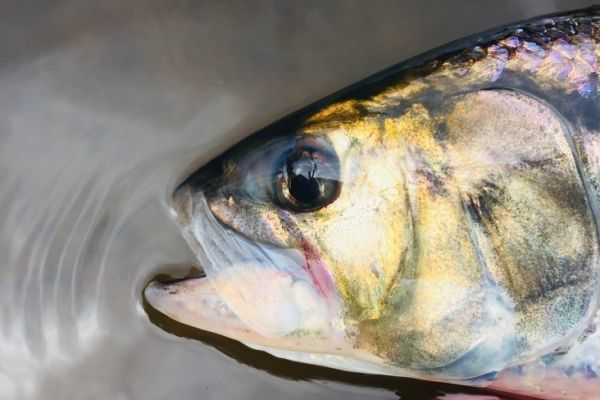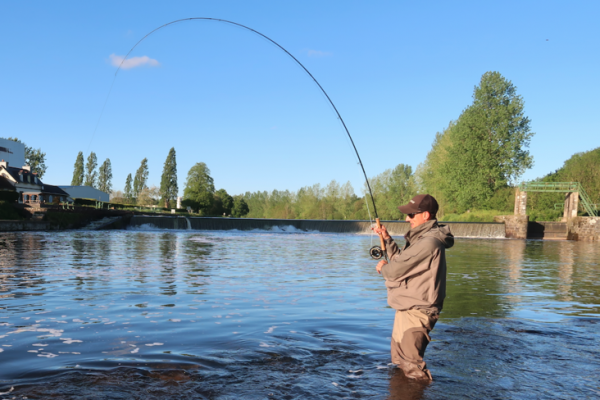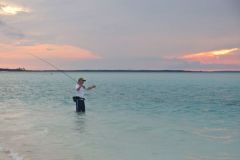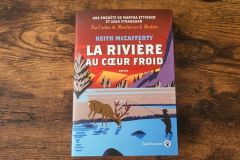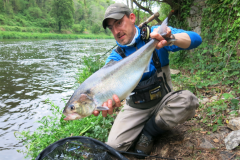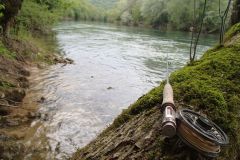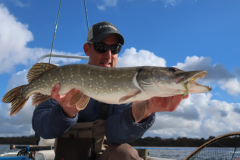As I'm guiding almost every day from the end of March to the end of November, my outings are often short and mainly at the end of the day after guiding.
I'm taking advantage of an early end to the guide to go and try the beautiful shad on one of my favorite spots.
Late afternoon after work
It's 5:30 pm and I'm off to the post where I know the shad are coming up in small numbers, but on a river where they're less sought-after.
The two rivers in Brittany where most shad are caught are the Aulne (29) and the Blavet (56), both canalized rivers. However, in some smaller rivers, there are upwellings of shad that are often stopped in their migration by a dam or weir, where they stop every year.
I set up my equipment at the water's edge, as always, to observe the river and see if they show up on the surface. In fact, shad swim like salmon. In other words, they rise to the surface and bring out their heads, then their backs and tails, although we're not sure why.
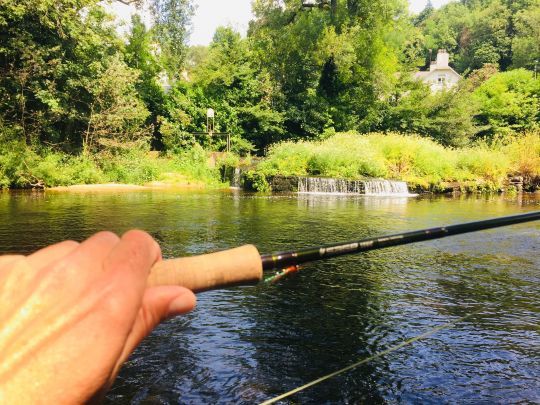
I set up my rod, a 10-foot SAGE Sonic 7 line, which is very handy for fishing from the shore, casting on the roll and fighting pretty shad. Here, the shad are between 50 and 70 cm long. This is the largest species of the Alosa genus. Its cousins, the feintes, are smaller.
On a floating line, I add a 3 m polyleader in intermediate, then a 2 m fluorocarbon tip in 22 to 25°. This allows me to restrain the fish a little so that I can release them in the best possible conditions.

Know where the fish are and how to catch them
I know this fishery by heart, having practiced it since 2003 on Brittany's rivers, and 2015 on this river. I know where they post up and how to catch them. It took me a while to figure out how to trigger them.
Whereas on the Aulne and Blavet rivers, fishing is mainly carried out using inert downstream drifting, and the aim is to present the fly at the right speed and depth by mending the fly line, here fishing is done differently.
The current is much less, and the idea is to bring the fly down and then gradually bring it back up to the surface by animating the fly. To do this, I cast downstream, perpendicular or upstream depending on the activity and depth of the spot. Then I animate by jerky strips and look for what they like.
If the water is clear and/or low, it's not uncommon to see them rise and take the fly, which is often spectacular and very exciting. They can even be sight-fished.
This year, we have water and it's not yet possible to see them following and catching. Nevertheless, the bites are making themselves felt. So you have to cast very quickly, because shad spit quickly.
I ride one of my favorite flies for shad fishing. I also use other variants, but very often in orange, which I think work best.
After a few casts, I take my first big hit, which I respond to with a quick, dry strike. The shad are freshly reeled in and very powerful. This one doesn't let up and heads back up the river with a bang!
I let her go, because shad don't look for obstacles. All you have to do is adjust your drag to slow it down, then keep in contact. They often stall, as their mouths are cartilaginous and therefore very hard.
Here's the first one out of the water. A beautiful fish, over 60 cm long. Certainly a female, which are often larger than the males.
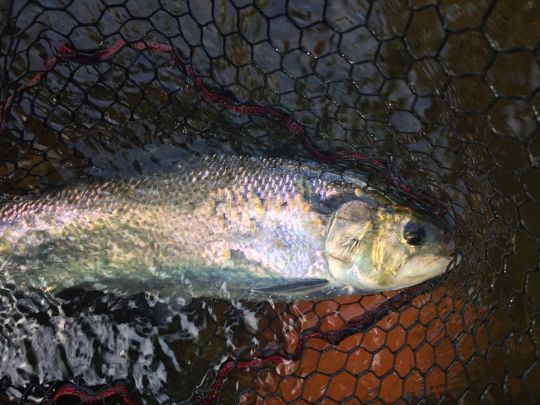
I'll catch another fish in this pool, then another and a stall in another hole further up. They're active!
The taps were straightforward, so you didn't miss many. The fights are as fun as ever. It's a fabulous migrator. Time to go home. Can't wait to go back.
